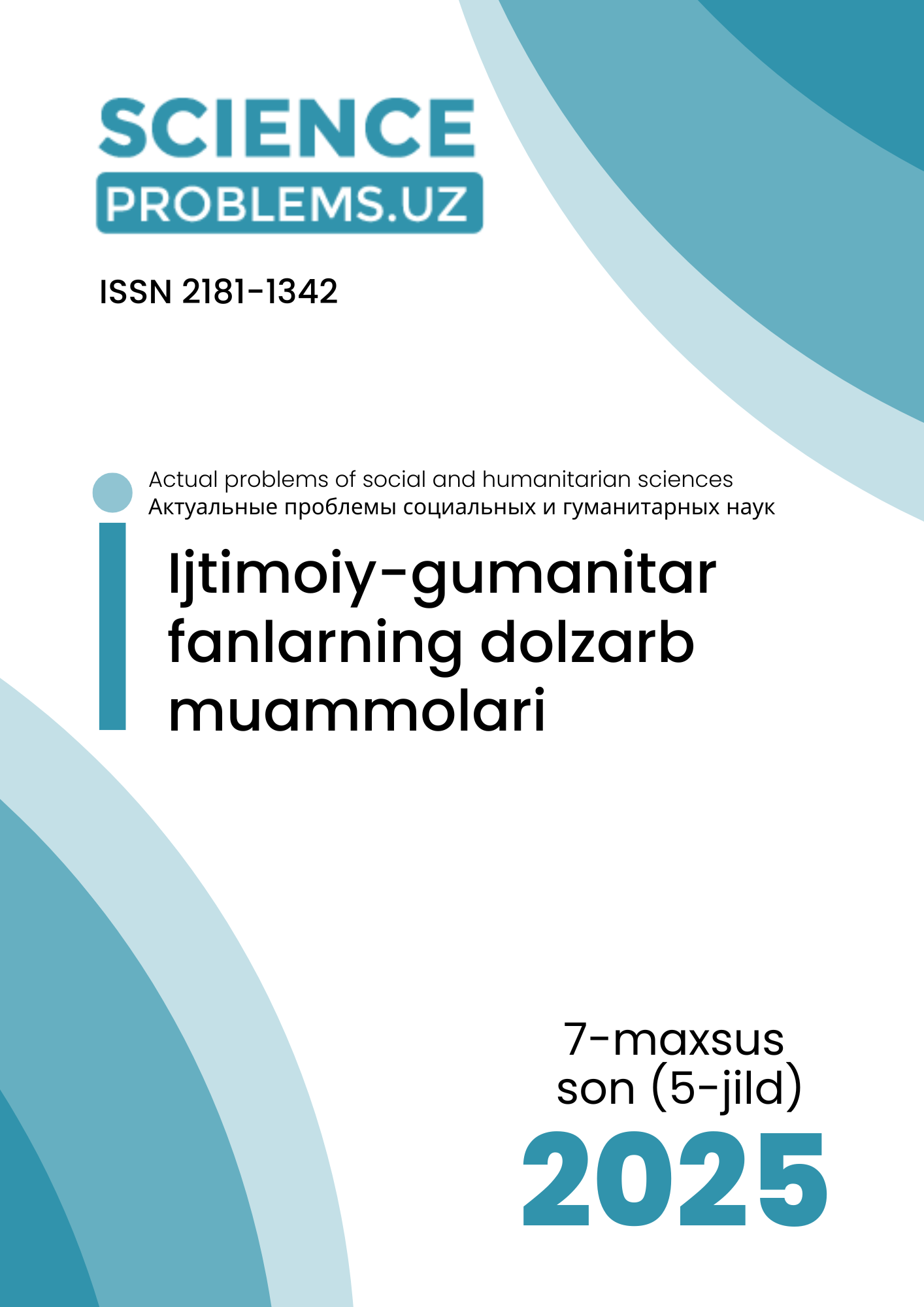THE COGNITIVE FUNCTION OF LANGUAGE AND THE CONCEPTUAL FORMATION OF MORAL-EVALUATION (GOODNESS/BADNESS) CATEGORIES
DOI:
https://doi.org/10.47390/SPR1342V5SI7Y2025N15Keywords:
good, evil, semantics, stylistics, linguoculturology, cognitive analysis, comparative typology, proverb, saying.Abstract
This dissertation analyzes the semantic and stylistic features of the moral-evaluative categories “good” and “evil” in English and Uzbek from the perspectives of linguoculturology and cognitive linguistics. The study examines lexical units, proverbs, and sayings, as well as the usage of these categories in literary texts. The analysis employs the theory of semantic fields, the cognitive frame model, and comparative typology methods. As a result, both universal and culture-specific aspects of the concepts of good and evil in English and Uzbek cultures are identified.
References
1. Улуқов Н. Тилшунослик назарияси. – Тошкент: Barkamol fayz mediya, 2016. – 124 б.
2. Бушуй Т. А., Сафаров Ш. С. Тил қурилиши: таҳлил методлари ва методологияси. – Тошкент: Фан, 2007. – 184 б.
3. Сафаров Ш. Когнитив тилшунослик. – Жиззах: Сангзор,2006. – 112 б.
4. Blackwell Dictionary of Cognitive Psychology. – Oxford: Blackwell, 1990. – 408 p.
5. Ashurova D. U., Galieva M. R. Text Linguistics. – Tashkent: Turon-Iqbol, 2016. – 150 p.
6. Miller G. A. Introduction to the Formal Analysis of Natural Languages. – Cambridge: Center for Cognitive Studies, 1964. – 292 p.
7. Маматов А. Э. 100 наиболее важных функций языка = Тилнинг энг муҳим 100 та функцияси. – Тошкент: Bayoz, 2014. – 64 б.








